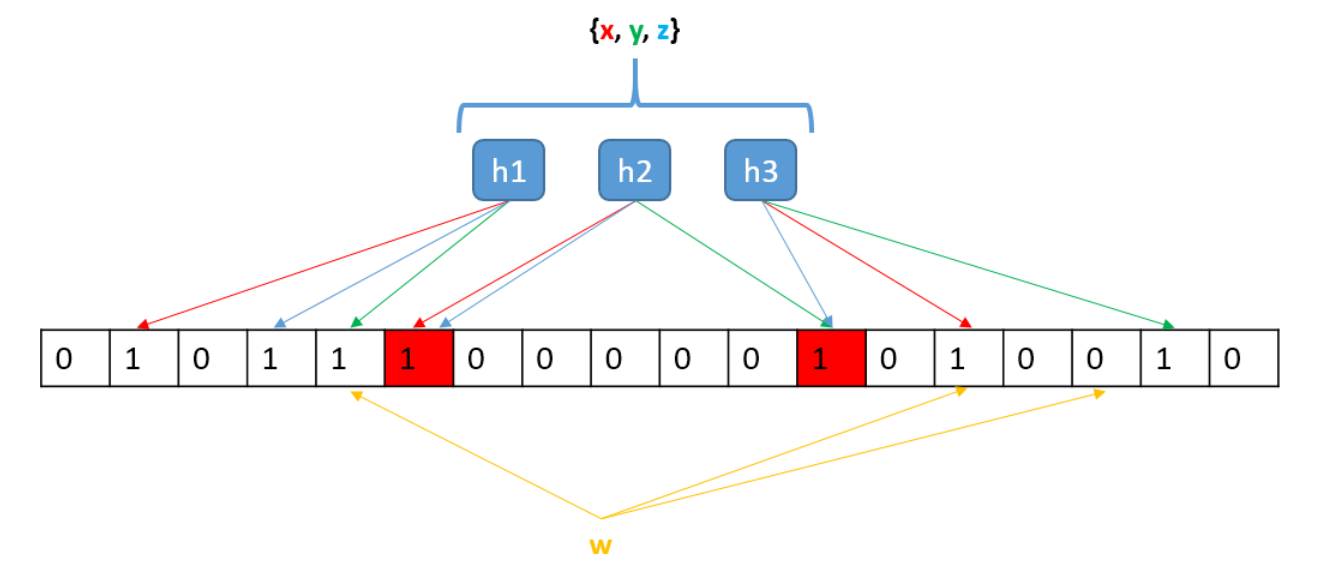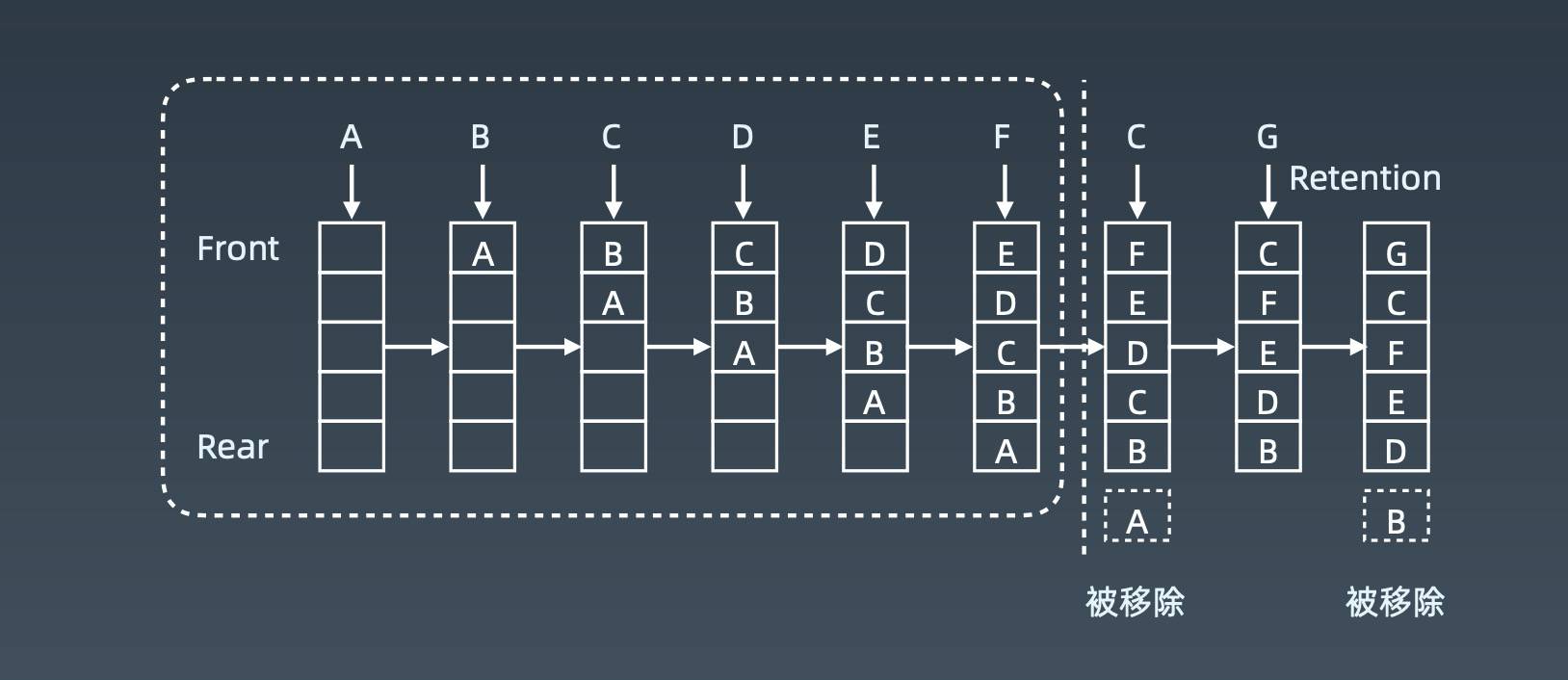布隆过滤器(Bloom Filter)
布隆过滤器 VS HashTable
布隆过滤器和哈希表类似。
哈希表:HashTable + 拉链存储重复元素。
对于哈希表,不仅存在哈希函数来得到 index 值,还要把整个元素全部放到哈希表中。哈希表是一种没有误差的数据结构,且有多少元素,每个元素有多大,所以的元素需要占用的内容空间,在哈希表中都要找相应的内存大小给存起来。
很多时候,在工业级应用中,我们并不需要存所有的元素本身,只需要存储这个元素在表中是否存在。这种情况下,如果只想查询有还是没有,这时我们需要一种更高效的数据结构。
布隆过滤器是一个很长的二进制向量和一系列随机映射函数。布隆过滤器可以用于家检索一个元素是否在一个集合中。
布隆过滤器优点是空间效率和查询时间都远远超过一般的算法,缺点是有一定的误识别率、删除困难。
示意图

如果一个元素它所对应的二进制位只要一个为 0,就说明这个元素不在布隆过滤器的索引中。
但是当一个元素刚好分配的三个二进制都为 1 时,我们不能肯定说元素存在于布隆过滤器的索引中,只能说是可能存在。
在布隆过滤器中查询元素,如果查不到,说明肯定不在,如果元素在布隆过滤器中二进制位都是 1,只能说它可能存在。
布隆过滤器,只适合在外面当缓存使用,进行快速判断。当元素查到,就会继续在数据库中去查。布隆过滤器可以节省访问数据库时间。
案例
- 比特币网络
- 分布式系统(Map-Reduce)- Hadoop、search engine
- Redis 缓存
- 垃圾邮件、评论过滤等
实现
- Python
- Java
LRU Cache
- 两个要素:大小、替换策略
- Hash Table + Double LinkedList
- O(1) 查询、O(1) 修改、更新
LRU: least recent use 最近最少使用
工作示例

替换策略
- LFU - least frequently used
- 统计每个元素被使用的频次最少的,放到最下面,最先被淘汰掉
- LRU - least recently used
- 最先淘汰不常使用的
替换算法总览:https://en.wikipedia.org/wiki/Cache_replacement_policies
相关题目
// LRU 缓存// 双向链表 + HashTable/*** @param {number} capacity*/var LRUCache = function(capacity) {this.capacity = capacity;this.hash = {};this.count = 0;this.dummyHead = new ListNode();this.dummyTail = new ListNode();this.dummyHead.next = this.dummyTail;this.dummyTail.prev = this.dummyHead;};/*** @param {number} key* @return {number}*/LRUCache.prototype.get = function(key) {const node = this.hash[key];if (node == null) return -1;this.moveToHead(node);return node.value;};/*** @param {number} key* @param {number} value* @return {void}*/LRUCache.prototype.put = function(key, value) {const node = this.hash[key];if (node == null) {if (this.count == this.capacity) {this.remove();}const newNode = new ListNode(key, value);this.hash[key] = newNode;this.unshift(newNode);this.count++;} else {node.value = value;this.moveToHead(node);}};/*** Your LRUCache object will be instantiated and called as such:* var obj = new LRUCache(capacity)* var param_1 = obj.get(key)* obj.put(key,value)*/function ListNode (key, value) {this.key = key;this.value = value;this.prev = null;this.next = null;}LRUCache.prototype.swap = function (node) {const temp1 = node.prev,temp2 = node.next;temp1.next = temp2;temp2.prev = temp1;}LRUCache.prototype.unshift = function (node) {node.prev = this.dummyHead;node.next = this.dummyHead.next;this.dummyHead.next.prev = node;this.dummyHead.next = node;}LRUCache.prototype.moveToHead = function (node) {this.swap(node);this.unshift(node);}LRUCache.prototype.remove = function () {const tail = this.pop();delete this.hash[tail.key];this.count--;}LRUCache.prototype.pop = function () {const tail = this.dummyTail.prev;this.swap(tail);return tail;}

